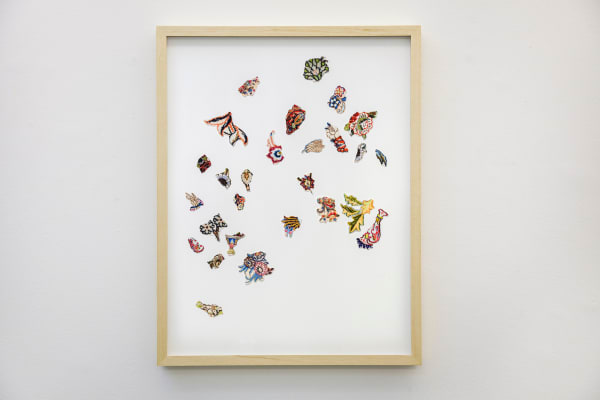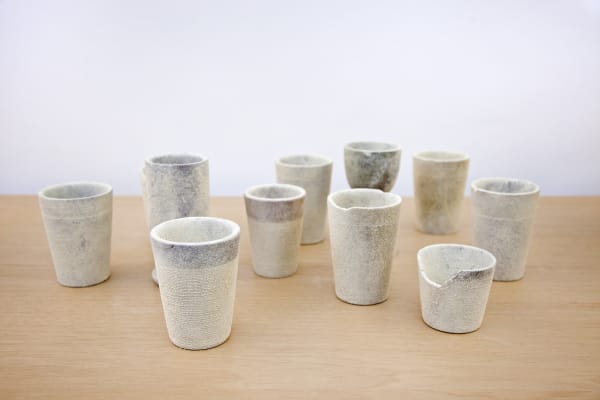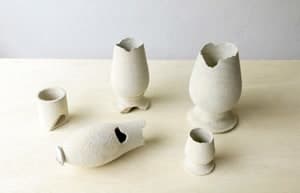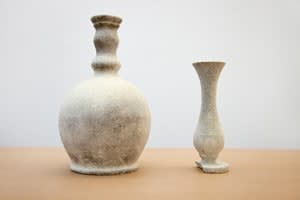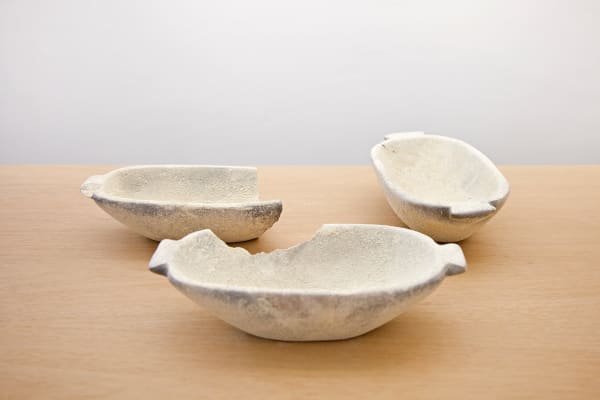Laura Belém: Short Stories
Laura Belém's work introduces ambiguities and philosophical issues to ponder contemporaneousness when incorporating peripheral stories as a reflective mode of its actions, interweaving various elements in its composition. Her artistic work does not originate only in the quiet and intimate space of the studio, but undertakes its application in the world in a public sphere: it demands the physical presence of the viewer, as if this perception were cumulative for the process of spatial intervention. This necessity to be public, the condition of a work that does not originate among four walls, implies a symbolic exacerbation which manifests and materializes itself in this delicate and ephemeral character of appearing in the world as if it represented the ongoing search for an art that appears and does not appear, and that suddenly, in this game of oppositions, retains a unique form of externalization.
The process of art is always asking; it is a continuous flow of knowledge, of a new order that acquires a substantive density. Laura Belém introduces the seed of plurality of the vision, creates symbolic territories where impossibilities become present, either by displacement of spatial situations, or by emptying the original content of objects—as if she wanted to assert a physical reality that is about to vaporize. Only a suggestive residue of previous narratives remains, waiting for new layers of meaning. The core of her poetics evokes a certain silence, a shifting of her gaze to an identical object in common use observed in daily life.
The gaze remains in this vacuum, this sort of contained emptiness, as a factor of disturbance. Its aesthetic operations adhere firmly to the contradictions and ambiguities that alter the conditions of our habitual perception of the world and substantiates a new order of experience to activate the information matrix with its personal mythology. Something that has already had its own meaning gains a new context while producing the image of the image, and indicates a storing of an anti-memory. It incorporates chance, and retains a structure of codes as something that does not belong to anyone. It signals a silent discourse through a game of subjectivities upon emptying the significant tenor of the contents of the raw material, and creates a new continent of work: moldable thought is installed there, creating fissures and gaps between the image and what it represents.
In this evacuation, we have the aesthetic experience of the absence, of the vestige and the establishment of a link between the collective of the images that were already present there and the subtle subjectivity of the artist. Its interrogative discourse dialogues with the reinterpretation of an original image, urges the real world to subtract something already encapsulated, that which was there, from its original function, and establishes an enigmatic moment that confronts us with the baffling complexity of the relationship between reality and its representation.
Vanda Klabin












